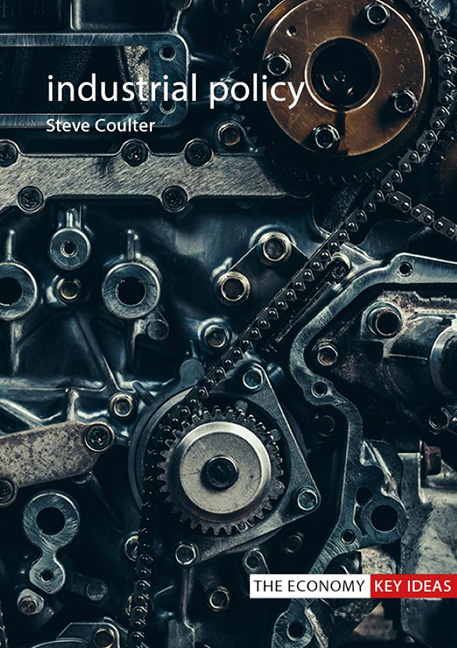Book contents
- Frontmatter
- Contents
- Preface and acknowledgements
- 1 Introduction: industry, economy andindustrial policy
- 2 States, markets and growth: the economics of industrial policy
- 3 Implementing industrial policy: the experiences of five countries
- 4 New horizons for industrial policy
- 5 Conclusion
- Further reading
- References
- Index
3 - Implementing industrial policy: the experiences of five countries
Published online by Cambridge University Press: 20 January 2024
- Frontmatter
- Contents
- Preface and acknowledgements
- 1 Introduction: industry, economy andindustrial policy
- 2 States, markets and growth: the economics of industrial policy
- 3 Implementing industrial policy: the experiences of five countries
- 4 New horizons for industrial policy
- 5 Conclusion
- Further reading
- References
- Index
Summary
This chapter examines the practical application of industrial policy through five country case studies: the UK, South Korea, the US, France and China. The purpose of this comparison is to show how industrial policy is actually done, in a real-world setting, and to showcase the different economic, historical and institutional settings in which this takes place. The chapter also includes brief surveys of industrial policies of the European Union and a number of Latin American countries.
Two of the cases, the UK and the US, exemplify developed liberal-market economies with relatively small public sectors and an ideological attachment to free markets which have, nevertheless, also pursued active, sector-specific industrial policies promoting key industries at various times. However, dominance of market-based relationships between actors has often complicated the task of managing widespread intervention beyond a few sectors. A bias towards sets of industrial policies, rather than overarching strategies has been one result of this, although this is changing. The different approaches taken by the two countries to surmount this problem are compared and contrasted.
Another two, France and South Korea, possess stronger central states with accompanying ambitions to direct comprehensive industrial strategies from the centre. Both embody a “big-firm capitalism” of national champion firms with strong political links. They also highlight how governments try to reconcile the state operating through private sector actors alongside the ever-present danger of state capture.
South Korea, along with the final example of China, are later-developing East Asian rather than European countries which both intervened heavily to develop their economies after the devastation of war and revolution. However, they used very different strategies – South Korea’s focus on export of finished products initially behind a high tariff wall, versus China’s insertion of itself into the supply chains of TNCs. Of the two, only the former has so far reached an advanced country per capita standard of living. China’s big challenge is managing the transition from low-cost producer to a more technology-based economy as its labour costs rise.
The EU text box (3.2) offers an examination of how industrial policies can be coordinated by a supranational body (the European Commission), while the Latin American text box (3.3) groups together countries where politicization of industrial policy has most undermined its success.
- Type
- Chapter
- Information
- Industrial Policy , pp. 45 - 92Publisher: Agenda PublishingPrint publication year: 2023

